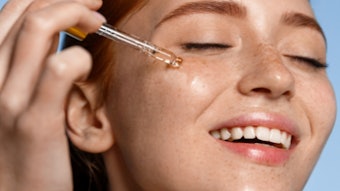
At the International Federation of Societies of Cosmetic Chemists (IFSCC), BASF experts will present their latest research findings in innovative skin and hair care.
Recent: BASF Presents Latest Sustainable Innovations
In six poster sessions and one oral presentation, BASF will cover a range of research projects including studies on the skin microbiome, epigenetics and acne-prone skin.
Skin Elasticity After UVA Damage
In a podium session, BASF scientists will share findings on how to reverse histone modification induced by UVA damage.
Epigenetic regulation has been increasingly considered to play an important role in photoaging. Several of the classical hallmarks of aging correlate with epigenetic alterations that regulate transcription.
The research team has clarified the impact of specific acetylation among post-translational modifications of histones and its impact on the expression of dermal proteins involved in skin elasticity. The study results provided the basis for selecting products that could help support healthier skin post photo exposure.
Microbiome Research
Scientists at BASF will present their results in two poster sessions. The first will illuminate the differences in skin microbiota composition between young and aged skin with a specific focus on wrinkles.
Having identified several microbiome species that are more prevalent on a younger persons’ skin, the next step will be to elucidate their potential function and impact on the skin to develop solutions that help preserve a youthful appearance.
While much focus is currently being given to individual bioactives that can affect the microbial composition of the skin, the second study explores the effects of galenic contained in a cosmetic formulation such as emollients, emulsifiers and polymers.
The main intent was to identify ingredients and then to design formulations that do not disrupt the complex microbial community found on healthy skin.
According to BASF, based on the obtained results, careful ingredient selection and formulation expertise, microbiome-friendly skin care formulations were successfully developed.
TCM Through Extraction
In this poster session, BASF researchers will share results on their study of three TCM plants from the Yunnan province of China and the extracts’ efficacy for skin health and beauty.
Previously: BASF Care Creations Highlights Latest Launches at CASCC
Researchers were able to perform titrated extracts containing either iridoids, flavonoids or a polysaccharide and evaluated the biological potential. The results encouraged the use of those TCM extracts to respond to three major cosmetic market demands: moisturization (Dendrobium sp. stems), anti-aging (Pyracantha sp. fruits) and sensitive skin (Gentiana sp. roots).
Exploring C. acnes
Two further poster sessions led by BASF will deal with different approaches to developing effective ingredients for acne-prone skin, focusing on the impact of Cutibacterium acnes (C. acnes).
In one of the studies, BASF experts explored the potential of the commensal strain Staphylococcus epidermidis to protect the skin against this opportunistic pathogen. To evaluate bacterial interactions, the research team developed bacterial and 3D microbiotic skin models.
The insights gained helped the team develop active ingredients inspired by the ecology of the skin microbiota to support the natural mechanisms of skin defense.
The second study builds on the finding that different phylogenic groups (phylotype I to III) are present within the C. acnes population and that C. acnes can be also characterized by the difference in the release of virulence factors.
Scientists now defined relevant methods to characterize and efficiently modulate these virulence factors. Having a more precise understanding of the efficacy and evaluating ingredients on various strains of C. acnes turned out to be crucial to improving the signs of acne-prone skin.
Infrared Spectral Imaging
Together with research partners from the University of Reims Champagne-Ardenne, BASF scientists will present an approach to assess hair histology and HSPG distribution changes in hair follicles at different phases of the hair growth cycle.
The infrared spectral imaging method used allows simultaneous revealing of the location, signatures and, in a semi-quantitative manner, the content of proteins, proteoglycans, glycosaminoglycans and sulfated glycosaminoglycans in hair follicles. From a cosmetological point of view, it represents a promising technique for studying the causes of hair loss.
Related: Solution that Targets 7 Facets of Follicles Shown to Prevent Hair Loss, Promote Growth










